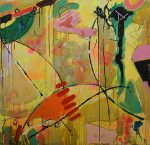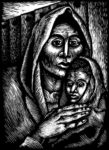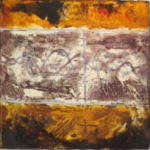Oscar Van Young (1906 – 1991) November 4 - December 31, 2021
- stacee
- November 3, 2021
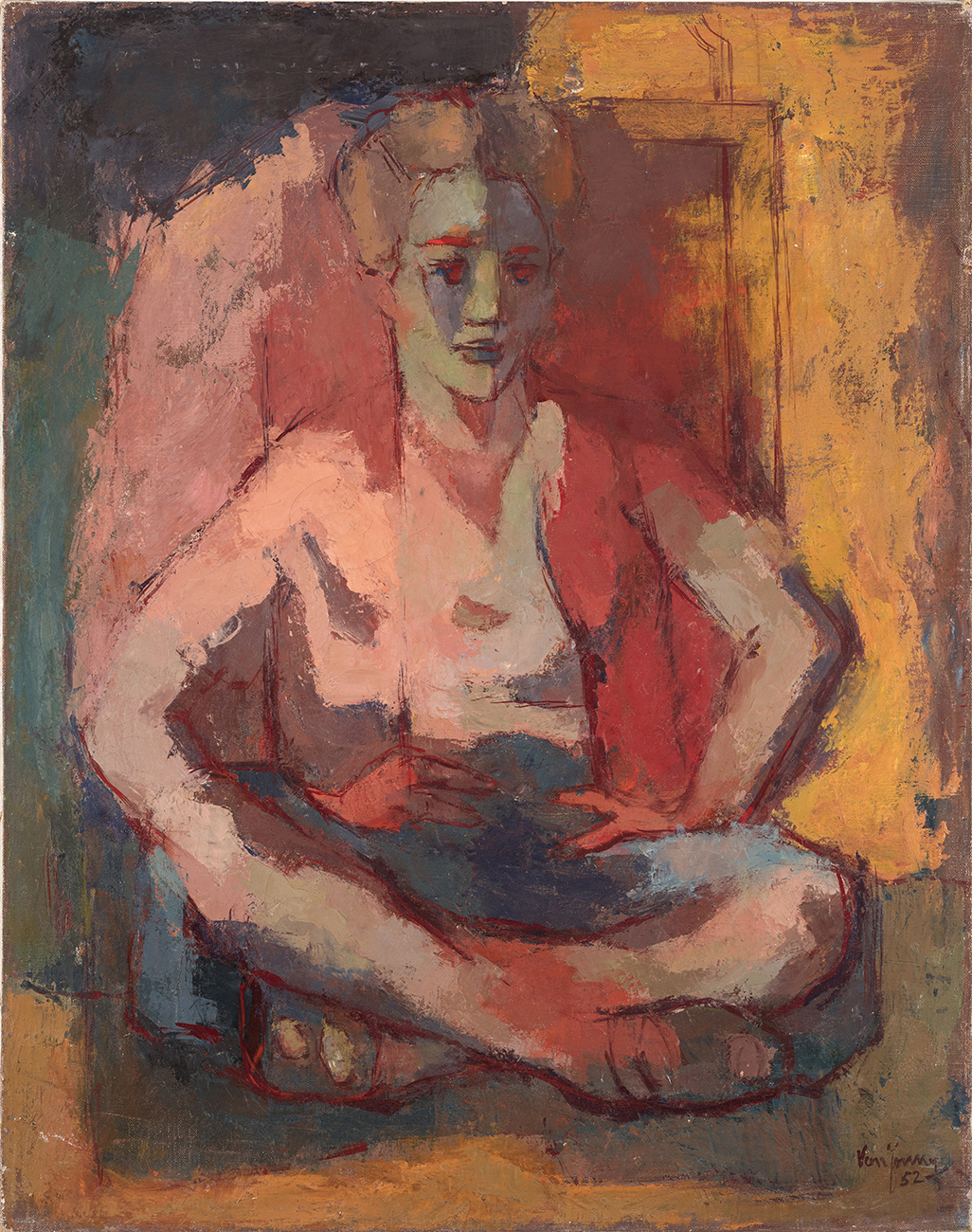
[vc_row row_type=”row” use_row_as_full_screen_section=”no” type=”full_width” text_align=”center” padding_top=”45″ padding_bottom=”45″ box_shadow_on_row=”no”][vc_column width=”1/4″][/vc_column][vc_column width=”1/2″][vc_video link=”https://youtu.be/NnOW8cbhgSI”][/vc_column][vc_column width=”1/4″][/vc_column][/vc_row][vc_row row_type=”row” use_row_as_full_screen_section=”no” type=”grid” text_align=”left” box_shadow_on_row=”no”][vc_column][vc_separator type=”normal” color=”#000000″ border_style=”solid” thickness=”1″ up_style=”px” down_style=”px”][/vc_column][/vc_row][vc_row row_type=”row” use_row_as_full_screen_section=”no” type=”full_width” text_align=”left” box_shadow_on_row=”no”][vc_column][no_elements_holder number_of_columns=”two_columns” switch_to_one_column=”1000″][no_elements_holder_item item_padding=”65px 50px 50px 0px” aligment=”center” vertical_alignment=”top” advanced_animations=”no” item_padding_1300_1600=”65px 50px 50x 0px” item_padding_1000_1300=”65px 35px 50px 0px” item_padding_768_1000=”0px 25px 25px 0px” item_padding_600_768=”0px 25px 25px 0px” item_padding_480_600=”0px 25px 25px 0px” item_padding_480=”0px 25px 25px 0px”][vc_single_image image=”4970″ img_size=”full” alignment=”center” onclick=”link_image” hover_animation=”no”][/no_elements_holder_item][no_elements_holder_item aligment=”left” vertical_alignment=”middle” advanced_animations=”no” item_padding_768_1000=”0px 0px 20px 0px” item_padding_600_768=”0px 0px 20px 0px” item_padding_480_600=”0px 0px 20px 0px” item_padding_480=”0px 0px 20px 0px”][vc_column_text]Oscar Van Young (born Joseph von Jung, but familiarly and legally known as Oscar) was born in Vienna, April 14, 1906. At a very young age he was introduced to literature, music, and art, which became the center of the young boy’s life. All of this was interrupted in 1917 when he was taken by his mother to Odessa, Russia, to visit his father, who had temporarily been living there for business reasons. But the family quickly found themselves in the middle of the Russian Revolution of 1917, surrounded by civil war and starvation. His father died of starvation after six months and though his mother desperately tried to keep them alive, she died two years later. For the next few years, the young Oscar lived on the streets of Odessa, doing what he could to survive while all the time continuing his studies at the Art Academy in Odessa. Finally in 1922, with the assistance of an American diplomatic official, and financial help from family living in America, he was sent to live in Chicago where an uncle owned a millinery shop.
Coming to Chicago in the mid-1920s, Van Young worked as an errand boy, and later as a lithographer; a skill that emerged in some of his earliest artistic efforts. Every spare moment was spent either studying the work of historic masters, Van Gogh, Cezanne, Degas, Utrillo, Pissarro, and others, at the Chicago Art Institute or honing his own skills as a young painter. By the early 1930s he began to gain a reputation as an artist during the Depression years in Chicago. He was one of many American W.P.A artists, earning a modest government stipend from the Federal Arts project during the Great Depression, creating public murals; many in the preferred “social realist” style of the times. (Van Young’s 1938 painting, “The Laundresses”, is emblematic of this period.)[/vc_column_text][/no_elements_holder_item][/no_elements_holder][/vc_column][/vc_row][vc_row row_type=”row” use_row_as_full_screen_section=”no” type=”full_width” text_align=”left” padding_bottom=”25″ box_shadow_on_row=”no”][vc_column][vc_column_text]He was studying painting in a class taught by Sam Ostrowsky, when he met the artist Loli Vann (nee Lilian Finkelstein) in the early 1930s and they were married in 1935. In 1940 the couple moved to Los Angeles, where he worked for a time at 20th Century Fox as a set design artist, working on several notable films including Alfred Hitchcock’s 1944 classic, “Lifeboat”. Over time, Oscar Van Young’s reputation as a painter grew to national levels with exhibitions in galleries and museums across the country.
Von Young’s subject matter from the 1930s through the mid-1940s, was predominantly figurative or cityscapes, depicting the neighborhoods and streets of Chicago and later Los Angeles. By the late 1940s he was developing his personal interpretation of post-impressionism and abstract expressionism, while still continuing to paint the cityscapes he loved, which continued through the mid-1960s. His form of expressionism was seldom entirely non-objective though; instead preferring to retain his love and intimacy with the figure or object, executed with thick, bold brushwork and robust color, which often obscured the subject. In this way, his work remained apart from the large scale, non-objective paintings pioneered by the New York Expressionists.
The post-impressionist paintings embody his love of the late 19th/early 20th century European masters he’d spent so much time studying at the Art Institute; their romantically sentimental representationalism in contrast with his bolder abstract work.
Never abandoning the cityscape, Van Young’s oeuvre grew with varying stylistic depictions of Los Angeles, Ensenada, the cities of Europe, St. Thomas, Morocco, and Mexico. Galleries found these cityscapes of European streets, to be particularly popular with collectors, and these became the prevalent genre in the artist’s late career through the 1980s.
Over the course of Van Young’s career, his paintings were presented in important exhibitions, among them The Corcoran Gallery in Washington, D.C., the Virginia Biennial, San Francisco Museum of Art, the Art Institute of Chicago, the Los Angeles County Museum of Art (LACMA), and many others. He had numerous solo shows throughout California, was represented in many museums and galleries internationally, and had works acquired by a number of prominent museums. Van Young was listed over decades in Who’s Who In America, Who’s Who In The World, Who’s Who In American Art, and other publications devoted to biographies of prominent figures in the arts, and was elected a member of the American Academy of Arts and Letters.
For many years he taught privately, as well as at the Otis Art Institute, Pasadena City College, and California State University – Los Angeles. Between 1940 and 1980, Van Young was a prominently visible figure in the West Coast art scene.
Oscar Van Young passed away on February 26, 1991.
A collection of his professional papers is held by the western section of the Smithsonian Institution Archives of American Art at the Huntington Library.[/vc_column_text][vc_empty_space height=”45px” image_repeat=”no-repeat”][vc_column_text]
PERMANENT PUBLIC COLLECTIONS
[/vc_column_text][vc_empty_space height=”25px” image_repeat=”no-repeat”][vc_column_text]Los Angeles County Museum of Art
Palm Springs Desert Museum
Illinois State Museum
Smithsonian Institution, Washington, DC
Laguna Beach Museum of Art
Chicago Institute of Art
Santa Barbara Museum of Art
The Frye Museum, Seattle, WA
Israel Art Museum, Tel Aviv
[/vc_column_text][vc_empty_space height=”45px” image_repeat=”no-repeat”][vc_column_text]
CURATOR’S COMMENTS
[/vc_column_text][vc_empty_space height=”25px” image_repeat=”no-repeat”][vc_column_text]One of the things I discovered when researching Oscar Van Young’s sixty-year career, was how popular and successful his cityscapes were. Critics and collectors alike both loved them. Upon meeting his son, Professor Eric Van Young and reviewing all the paintings still in the family’s possession, it became clear to me why they’d enjoyed such popularity. Many were beautiful, of course, but Van Young had an eye for the less conspicuous and often captured a street less traveled or a solitary figure finding comfort, sitting alone, barely visible, against a barren urban landscape. Ultimately these paintings will be integrated into the gallery’s representation of the artist’s legacy within a short amount of time.
But the genre that it seemed (at least to me) had been under-served or under appreciated by the more commercial galleries, were the figurative-expressionist and abstract paintings. Clearly, this painter who’d stood in the Chicago Art Institute, studying the impressionist/post-impressionist paintings of the 19th century Masters, was bringing much of that influence to bear with his more freely expressive style of painting! His brushwork was impeccable, his palette rich with colors contrasting and blending or cleanly delineated planes of color fitted together like puzzle pieces.
In most of these paintings one also immediately notices the “drawing” of the overall composition or parts of the composition. “Girl With Dog” (1954), is one brilliant abstract example. Two even better examples are the slightly less abstracted, “Three Children” (1952-1958) and “Woman With Irises”(1954) where the drawing in the former is explicitly clear in the outlining of the figures; and in the latter, take note of the woman’s foot (lower left) and the legs of the Cubist-influenced table; both subtly referencing Pablo Picasso. (As I frequently state: For artists in the mid-20th century, you couldn’t get away from formidable influence of Picasso!)
For the purpose of this first Van Young show, reintroducing this extraordinary painter to the public thirty years after his passing, I’ve chosen to highlight these paintings – the figurative expressionist, abstract expressionist, and post-impressionist work – as it seems to me that this is where the artist’s creative genius was the most evident. Most of the great abstract expressionists who rose to fame in the post-war years had studied and were deeply influenced by many of the same masters of the 19th century, that Van Young had studied as well. Like them, creating his own personal imprimatur – one I believe was deeply influenced by the trauma and triumphs he’d experienced when younger, as well as the classical Northern European roots he’d brought with him as an immigrant to America.
An early critic’s review in The Chicago Sunday Times, described Oscar Van Young as “…this serious young man, who thinks and talks paint all the time…”. That persistent strength, the obsessive pursuit of a goal, is possibly part of what saved the young man while others starved to death in Russia, and clearly is what contributed to the remarkable work Oscar Van Young left to the world of fine art!
Frederick R. Holmes/ November 2021[/vc_column_text][/vc_column][/vc_row][vc_row row_type=”row” use_row_as_full_screen_section=”no” type=”grid” text_align=”center” padding_top=”45″ padding_bottom=”25″ box_shadow_on_row=”no”][vc_column][vc_column_text]
A CURATED SELECTION, 1938 – 1967
[/vc_column_text][vc_empty_space height=”10px” image_repeat=”no-repeat”][vc_column_text]
MID-CENTURY PAINTINGS & WORKS ON PAPER
[/vc_column_text][/vc_column][/vc_row][vc_row row_type=”row” use_row_as_full_screen_section=”no” type=”full_width” text_align=”center” padding_bottom=”55″ box_shadow_on_row=”no”][vc_column]
-
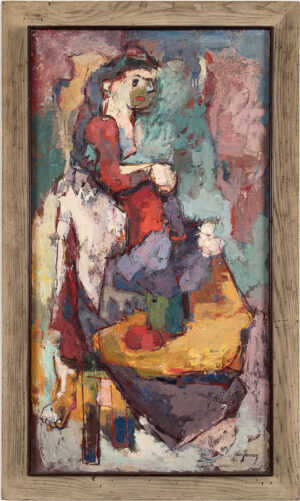
Woman With Irises
$17,500.00 Add to cart -
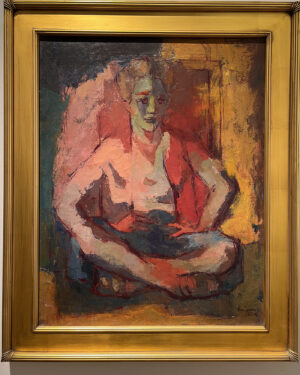
Woman Seated
$18,000.00 Add to cart -

Waterfall, No. 1
$16,000.00 Add to cart -

Waterfall, No. 4
$10,000.00 Add to cart -
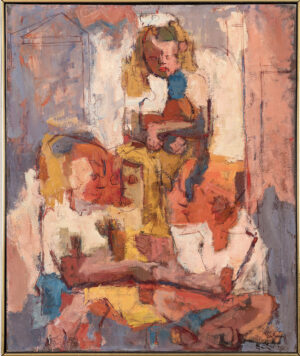
Three Children with a Doll
$16,500.00 Add to cart -
Sold
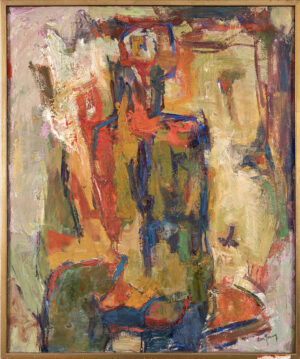
The Philosopher
$18,000.00 Read more -
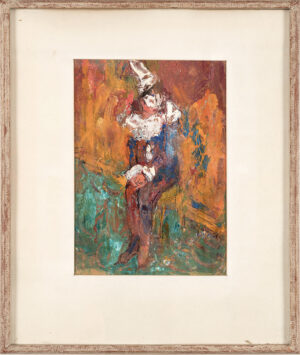
Pierette
$8,500.00 Add to cart -
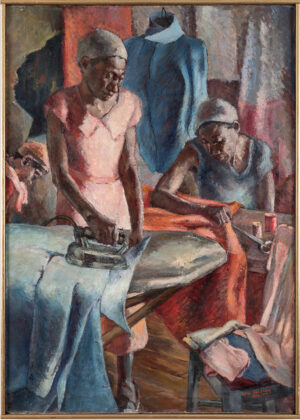
Laundresses, 1938
$42,000.00 Add to cart -
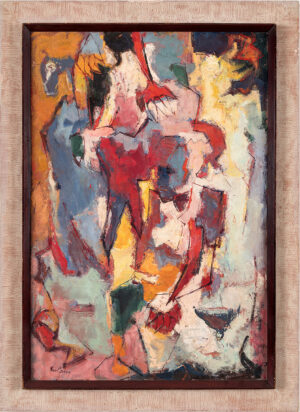
Girl with Dog (Orchestration in Red, Blue & Gold)
$17,000.00 Add to cart -
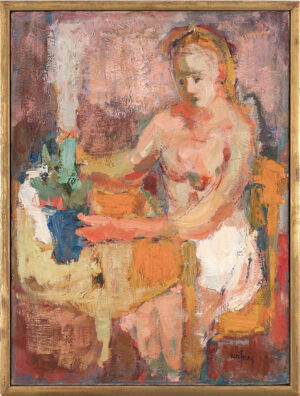
Introspection No.1
$13,500.00 Add to cart -
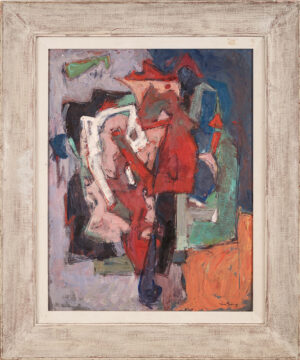
Harlequin & Columbine, No.4
$14,500.00 Add to cart -
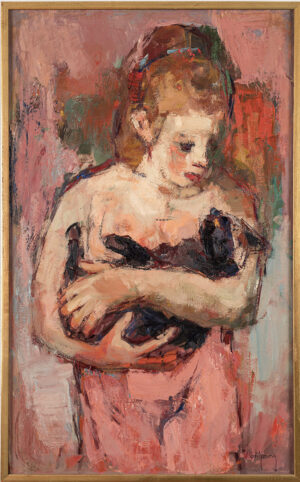
Girl with Cat
$12,000.00 Add to cart -
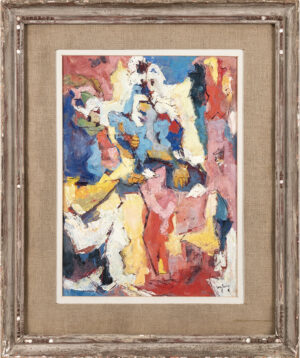
Girl in Ballet Dress
$12,500.00 Add to cart -
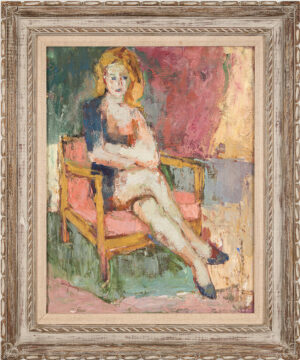
Independent Woman (Evelyn)
$12,500.00 Add to cart -
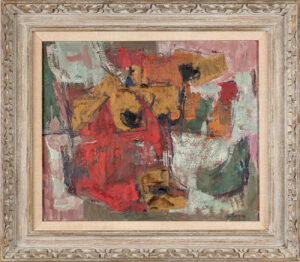
Driftwood
$16,000.00 Add to cart



